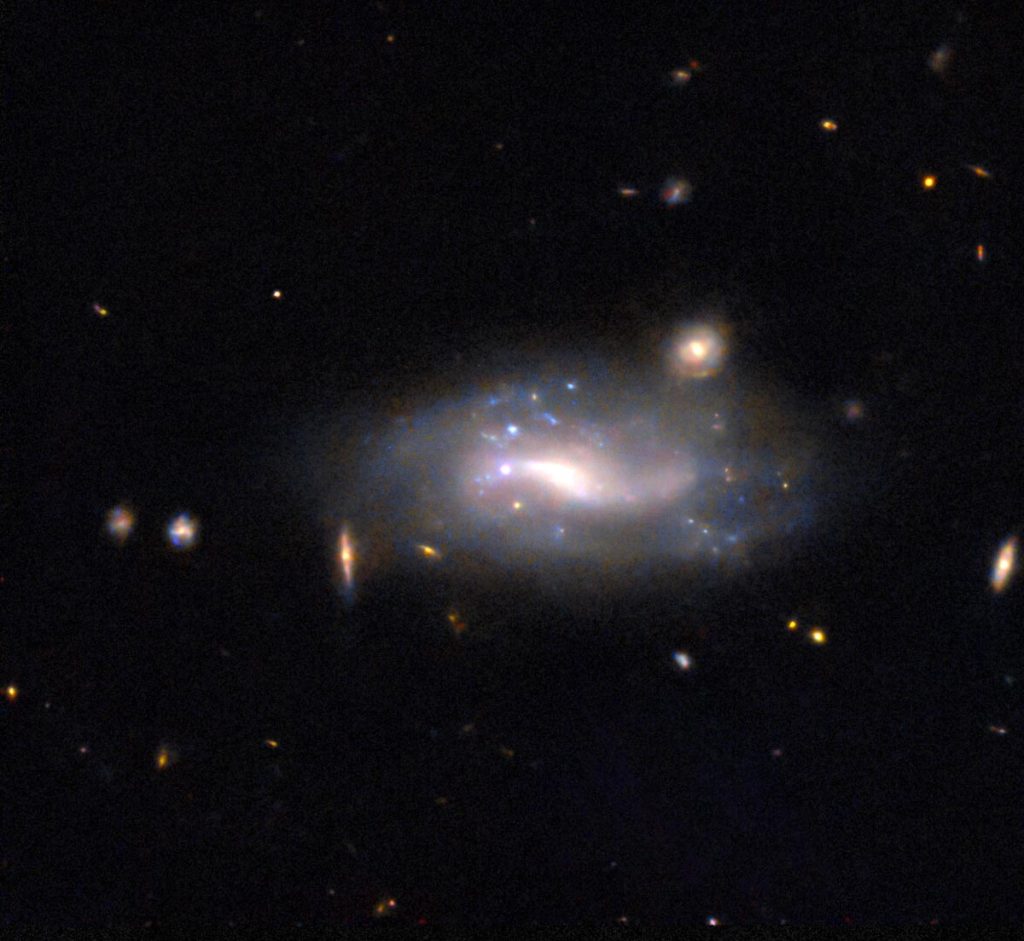
Hubble Captures a Distant Supernova
The NASA/ESA Hubble Space Telescope has captured a striking image of a supernova and its host galaxy, LEDA 132905. This distant galaxy, located in the constellation Sculptor, lies more than 400 million light-years away. Despite the vast distance, its faint spiral structure and clusters of bright blue stars are still visible.
At the center of the image, between the galaxy’s glowing core and its dimmer left edge, a bright white dot marks the location of supernova SN 2022abvt. Discovered in late 2022, this stellar explosion was observed by Hubble about two months later.
The image was created using data from a study on Type Ia supernovae — powerful stellar explosions triggered when the exposed core of a dead star undergoes a sudden burst of nuclear fusion. These particular supernovae are valuable to astronomers because they serve as cosmic measuring tools, helping to determine precise distances to far-off galaxies.
Catching a Cosmic Explosion in Action
The Universe is a big place, and supernova explosions are fleeting. How is it possible to be in the right place at the right time to catch a supernova when it happens? Today, most supernovae are discovered by robotic telescopes that continuously scan the night sky. But some are still found the old-fashioned way, by careful observers who take repeated images of the sky and search for changes.
SN 2022abvt was spotted by the Asteroid Terrestrial-impact Last Alert System, or ATLAS. As the name suggests, ATLAS was designed to track down the faint, fast-moving signals from asteroids close to Earth. In addition to searching out asteroids, ATLAS also keeps tabs on objects that brighten or fade suddenly, like supernovae, variable stars, and galactic centers powered by hungry black holes.








